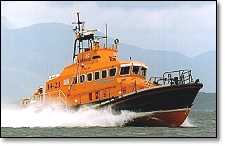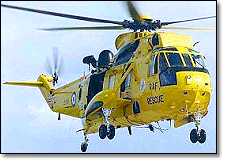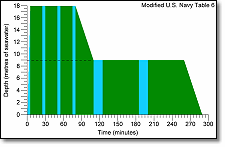First Aid For Decompression Illness -Â Treatment for Decompression Illness
First Aid for DCI
Initial treatment for all suspected cases of decompression illness, whether thought to be DCS or CAGE, should be the same. Firstly, the accepted practice of “Danger, ABC” should be used.
Safety first – do not place yourself at risk of becoming another casualty, it is more difficult to treat two divers than just one.
If unconscious, place the casualty in the recovery position and ensure airway is open.
Administer high concentration oxygen if available.
Perform CPR if required.
Seek medical assistance immediately – see the contact section for details.
In addition, rescuers should ensure the following.
Lay the casualty down and keep them horizontal – this may help prevent bubble migration to the brain.
Encourage the diver to remain calm and still.
Protect against hypothermia – replace wet clothes with dry. Do not expose to excessive heat.
Encourage fluid intake (aim for 1 litre if given by mouth) – if the casualty has a reduced conscious level or has difficulty in swallowing then avoid giving oral fluids. If available, intravenous fluid therapy is preferred.
Monitor for deterioration and record observations. A printable copy of a casualty-monitoring sheet can be downloaded here (PDF format).
Bear in mind that there may be more than one diver in the group with decompression illness.
Notify the appropriate emergency service of any deterioration.
Never administer Entonox (“gas and air”). This will worsen the condition because it consists of 50% Nitrous Oxide, which is highly soluable in the body’s tissues and existing air spaces.
The British Hyperbaric Association have produced a credit-card sized ‘Diver Help Card’, which gives a summary of the main symptoms along with first aid measures and emergency contact information in the UK. It can be purchased for a nominal fee from the BHA. Other agencies, such as the Divers Alert Network (DAN), supply similar cards.
Referral of Casualties
 It is imperative that rescuers are aware of the appropriate route of referral for recompression treatment. The Health and Safety Executive (HSE) require that commercial SCUBA divers in the UK have a pre-existing arrangement with an appropriate facility in the event of DCI. Recreational divers in Scotland are treated free of charge at the most appropriate chamber as part of the National Health Service (NHS).
It is imperative that rescuers are aware of the appropriate route of referral for recompression treatment. The Health and Safety Executive (HSE) require that commercial SCUBA divers in the UK have a pre-existing arrangement with an appropriate facility in the event of DCI. Recreational divers in Scotland are treated free of charge at the most appropriate chamber as part of the National Health Service (NHS).
Divers who simply arrive at a local recompression facility risk delaying treatment due to the possibility that the chamber may be out of service, already in use, or not suitable for treatment requirements.

Usually, the easiest and most logical first point of contact for suspected cases of DCI (particularly if still at the dive location) is the coastguard.
Once the coastguard is contacted, a standard emergency procedure is activated. This involves the coastguard, other emergency services (lifeboat, helicopter, ambulance etc.) and the central co-ordinator for diving related emergencies.
The following is a typical scenario.
The coastguard will mobilise the appropriate services (i.e. helicopter, ambulance etc.) and contact the Central Co-ordinator with a description of the incident.
The Central Co-ordinator will then inform the coastguard of the nearest recompression chamber which offers the most appropriate patient care for the diver (still to be confirmed).
The coastguard will contact the emergency services and let them know which Hyperbaric Unit to take the diver.
First Aid For Decompression Illness Requires Recompression Therapy
The definitive treatment for any form of decompression illness is recompression in a hyperbaric chamber. The main purpose of this is to reduce the size of any existing bubbles. In addition, 100% oxygen is given in order to encourage the excretion of nitrogen from the body. Symptoms may persist due to existing tissue damage and the accumulation of blood cells, etc, around the points where bubbles were situated.
 At the Hyperbaric Medicine Unit in Aberdeen the most common therapy for bends is based on a modified U.S. Navy Table 6 profile. In this treatment, the patient is compressed to nearly three times normal atmospheric pressure, which equates to a depth of 18msw.
At the Hyperbaric Medicine Unit in Aberdeen the most common therapy for bends is based on a modified U.S. Navy Table 6 profile. In this treatment, the patient is compressed to nearly three times normal atmospheric pressure, which equates to a depth of 18msw.
Depending on the patient’s condition during the treatment, the table may be extended, or changed to a Heliox (HeO2) saturation table lasting several days.
Quick Links